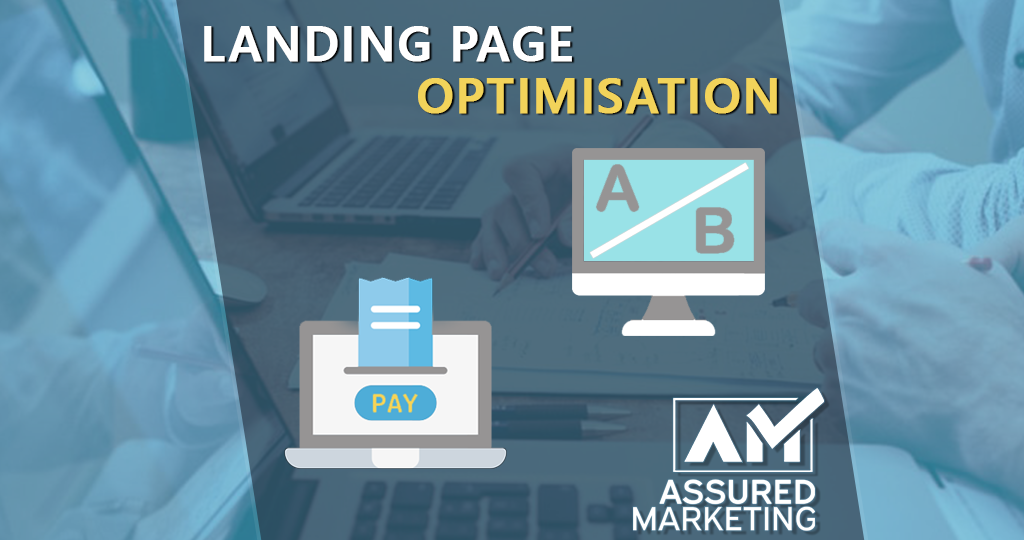Increasing your site’s traffic on the back of some successful SEO or PPC efforts is a great feeling for any business owner. But – the feelings of positivity can quickly transpire into frustration if all of these new potential customers don’t seem to be converting at the speed you’d like them to.
That’s where Conversion Rate Optimisation (CRO) comes in, a methodical and occasionally experimental marketing tactic that aims to refine your sales journey through micro and macro adjustments throughout the site.
Now the best place to start with carrying out CRO is on landing pages / location pages that have been developed as part of SEO/PPC as this is going to be where the majority of people first encounter the site, and given that first impressions are everything it’s vital that you’re pushing for conversions from the off.
So, What Is Landing Page Optimisation?

Optimising landing pages is essentially carrying out an in-depth analysis of them and then implementing effective and positive changes based on your findings. It will often involve collecting and interpreting large amounts of both qualitative and quantitative data, trialing different variations of landing pages to split audiences (known as A/B testing) and implementing the most successful call to actions as a hook to entice users.
Why Should You Be Optimising Landing Pages First?
To state the obvious, a landing page is normally the first place that a visitor will land on your website, and it can also quite often be the only page they’ll see.
This makes it quite a simple fact that this is the one you have to get right, because the last thing you’re going to want is for new visitors to either bounce (leave the site without performing an action) or have a look around and decide that they’d prefer to look elsewhere if your page is poorly optimised.
Firstly, Understand The Different Types Of Conversion Goals
Now nearly all websites have a need for landing pages if they want to effectively drive new visitors to their website, but every business is different in the type of conversion they want a well optimised website to generate; for example there will be a hugely different sales process between a wedding planner and an insurance broker.
There are therefore many different types of conversions involved in digital sales, normally split into two categories; micro-conversions and macro-conversions.
Common micro-conversions include:
- A user signing up to a newsletter or mailing list
- Downloading some free resources/information in exchange for providing their data
Common macro-conversions include:
- Purchasing a product through an online store
- Making an enquiry regarding a service through an online form
So firstly when optimising your landing pages, you need to understand which of these above conversions it is that you’re actually looking to achieve. Once you understand this you can start to look at the different ways you can optimise effectively to drive more of these conversions.
Now You Need To Analyse Well & Collect Accurate Data

As part of any previous business plan, you will definitely have had to identify your target audience or ‘ideal customer’. So try to put yourself in their shoes for the first part of your analysis, actively look for the kind of aesthetic changes that would appeal to these people and what they would expect from your sales journey.
The second part can be more data based than that of theory and assumption. This will be to address things like load speed of the pages and overall performance and responsiveness of the site across different devices. In terms of load speed, you need to be aiming to reduce this below 3 seconds otherwise your bounce rate is going to be too high for you to generate any substantial amount of conversions.
In regard to responsiveness and usability this is crucial! You might always be looking at your site on desktop, but if the layout is different and text/images are missing when the page displays on mobile then you’re in trouble. Obviously, this is a more extreme example but it makes the point that even if one CTA button is missing, there’s going to be an impact on the number of conversions generated by that page.
Then, Carry Out Split (A/B) Testing
Here’s where you’re going to find out whether or not your assumptions on the preferences of your target audience were correct. By this point you’ll have made changes to the look, speed, responsiveness and usability of the site, but how will you know that these changes are right, and more importantly if you were unsure on which path to take on your improvements then you’ll be even more unsure of yourself.
So now you need to collect qualitative data from your audience on which landing page formats they prefer and this will be done through split testing. Essentially the process here is to have 50% of your visitors land on one version of a landing page and then have the other 50% land on another version – after a while you’ll start to spot which one is preferred and can make an informed decision on the path you take with the landing pages going forward.
The differences on the landing page can be minimal, from the colour of CTA buttons to the style and language used in the written content. Whichever variable it is that you want to test it is a simple process to implement in order to see if your hypothesis stands up.
To set up an A/B test you’ll need to have Google Analytics installed on the site as the tests are set up through the content experimenter feature, for more information on how to do this check out this walkthrough on A/B testing from Google.
Finally, Consider Timed Pop-Ups & Exit-Intent
There’s no denying that both timed pop-ups and exit-intent pop ups are effective. But – there is also no denying that they’re essentially the equivalent of the telesales hard selling that most people don’t really respond well to.

A timed pop-up that encourages newsletter subscriptions or that offers a discount in exchange for data can be a great way to capture information and drive sales. However, on the flip side of this it can firstly have an impact on load speeds (which we do not want) and it can discourage visitors from wanting to return to the website if they believe they’re going to be bombarded with pop-ups.
The same is true with exit-intent, it can be a great way to try and prevent those annoying bounces from visitors and salvage a sale from the jaws of defeat. However, the issue here is that if a visitor even accidentally moves attention away from the page they’re going to get hit with a pop-up, distracting them from the content you’ve spent so much time creating.


0 Comments